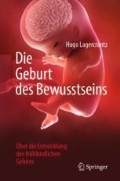Zusammenfassung
Auf Neugeborenen-Intensivstationen werden Säuglinge verschiedenen schmerzhaften Untersuchungen wie Neugeborenenscreenings und Venenpunktionen unterzogen. Ihre Schmerzgrenze ist vermutlich niedriger als später im Leben. Aufgrund der bereits relativ weit fortgeschrittenen Entwicklung des limbischen Systems ist die emotionale Reaktion ausgeprägt, wohingegen das kognitive Bewusstsein beschränkt ist. Föten reagieren zwar mit Grimassen auf nozizeptive Reize, sind sich der Schmerzen aber vermutlich noch nicht so bewusst, da sie große Mengen an endogenen sedierenden und analgetischen Substanzen besitzen. Dies ist der Grund, weshalb vaginal entbundene Neugeborene schwächer reagieren als solche, die per Wunschkaiserschnitt geboren wurden.
Access this chapter
Tax calculation will be finalised at checkout
Purchases are for personal use only
Literatur
Anand KJ, Hickey PR. Pain and its effects in the human neonate and fetus. N Engl J Med. 1987;317(21):1321–9.
Grunau RE, Oberlander T, Holsti L, Whitfield MF. Bedside application of the Neonatal Facial Coding System in pain assessment of premature neonates. Pain. 1998;76(3):277–86.
Grunau RV, Craig KD. Pain expression in neonates: facial action and cry. Pain. 1987;28(3):395–410.
Grunau RE, Ranger M, Langercrantz H. Pain and consciousness in infants. In: Garcia-Larrea L, Jackson P, Herausgeber. Pain and the conscious brain. Philadelphia: Wolters Kluwer Health; 2016.
Slater R, Cantarella A, Gallella S, Worley A, Boyd S, Meek J, et al. Cortical pain responses in human infants. J Neurosci. 2006;26(14):3662–6.
Williams G, Fabrizi L, Meek J, Jackson D, Tracey I, Robertson N, et al. Functional magnetic resonance imaging can be used to explore tactile and nociceptive processing in the infant brain. Acta Paediatr. 2015;104(2):158–66.
Goksan S, Hartley C, Emery F, Cockrill N, Poorun R, Moultrie F, et al. fMRI reveals neural activity overlap between adult and infant pain. Elife. 2015;4:e06356.
Mellor DJ, et al. The importance of ‘awareness’ for understanding fetal pain. Brain Res Brain Res Rev. 2005;49(3):455–71.
Bergqvist LL, Katz-Salamon M, Hertegard S, Anand KJ, Lagercrantz H. Mode of delivery modulates physiological and behavioral responses to neonatal pain. J Perinatol. 2009;29(1):44–50.
Ben-Ari Y. Is birth a critical period in the pathogenesis of autism spectrum disorders? Nat Rev Neurosci. 2015;16(8):498–505.
Fitzgerald M. The development of nociceptive circuits. Nat Rev Neurosci. 2005;6(7):507–20.
Bartocci M, Bergqvist L, Lagercrantz H, Anand K. Pain activates cortical areas in the preterm newborn brain. Pain. 2006;122(1–2):109–17.
Fabrizi L, Slater R, Worley A, Meek J, Boyd S, Olhede S, et al. A shift in sensory processing that enables the developing human brain to discriminate touch from pain. Curr Biol. 2011;21(18):1552–8.
Slater RFL, Patten D, Yoxen J, Worley A, Boyd S, Meek J, Fitzgerald M. Oral sucrose as an analgesic drug for procedural pain in newborn infants. A randomised controlled trial. Lancet. 2010;376:1225–32.
Anand KJ, Hall RW, Desai N, Shephard B, Bergqvist LL, Young TE, et al. Effects of morphine analgesia in ventilated preterm neonates: primary outcomes from the NEOPAIN randomised trial. Lancet. 2004;363(9422):1673–82.
Anand KJ, Palmer FB, Papanicolaou AC. Repetitive neonatal pain and neurocognitive abilities in ex-preterm children. Pain. 2013;154(10):1899–901.
Author information
Authors and Affiliations
Corresponding author
Rights and permissions
Copyright information
© 2019 Springer-Verlag GmbH Deutschland, ein Teil von Springer Nature
About this chapter
Cite this chapter
Lagercrantz, H. (2019). Schmerz. In: Die Geburt des Bewusstseins. Springer, Berlin, Heidelberg. https://doi.org/10.1007/978-3-662-58223-7_8
Download citation
DOI: https://doi.org/10.1007/978-3-662-58223-7_8
Published:
Publisher Name: Springer, Berlin, Heidelberg
Print ISBN: 978-3-662-58222-0
Online ISBN: 978-3-662-58223-7
eBook Packages: Medicine (German Language)

